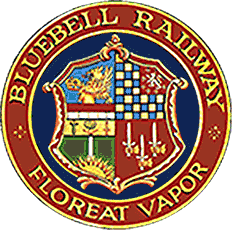Nowadays we have a many options available to us when we wish to communicate with others. However, even as late as the 1960s, many homes did not have even a land-line telephone.
Urgent messages could be sent by telegram from a post office, but most communication was by post, which was cheap, generally fast and reliable. Until the first privatisation in
the telephone industry in 1982 (with the advent of Mercury Communications) all communications – radio, TV, telegrams and mail – were under the control of the Post Office (General Post Office or GPO until 1969), which was under the direction of the government-appointed Postmaster General.
In the post-WW2 decades people would still hurry to catch the last postal collection of the day to ensure that a letter would make the first postal delivery at its destination.
Central to providing this reliability was a network of overnight mail trains, some of which contained one or more vehicles in which late mail was sorted by postmen en route to its destination; these were known as Travelling Post Offices (TPOs). For the really late mail, the sorting cars had a 'Late Fee' letter box where, for the hour before departure and for an extra half-penny postage, mail could be posted directly into the carriage to guarantee overnight delivery (as seen in the photo by Matthew Cousins on the right). Some long-distance TPOs dropped off and/or picked up pouches of mail bags at lineside locations during the journey without stopping. These TPOs were fitted with nets and/or 'traductor arms' to enable such operations. However those on the SR system, due to the shorter distances and more frequent stops, were not so equipped.
The Southern Railway inherited two principal TPO services from the LSWR and SECR:
a) London–Woking–Southampton Terminus (for transatlantic and international steamer services, together with those to the Channel Islands)–Dorchester
b) London–Redhill–Folkestone–Dover (the latter two for steamer services to Belgium and France)
The SR then placed a sorting carriage in the London–Newhaven boat train, to connect with steamer services to France.
Initially these services were provided using entirely pre-grouping rolling stock (albeit with some vehicles being rebuilt by the SR), but in 1936 a new prototype sorting car
(No. 4919) was constructed. In 1939, under Order No. 1043, three further sorting vans (Nos. 4920–4922) were built at Eastleigh to the slightly different SR diagram No. 3192. Four externally similar stowage vans (Nos. 4957–4960) were built at the same time, to Order No. 999.
The principal features of the diagram 3192 cars were long sorting counters along one wall, with padded edges and having pigeon-holes above. There was a set of double doors
towards the middle on this side, normally covered by a hinged flap counter inside. At one end there was a toilet for the GPO staff. On the other wall were hooks to hold the mailbags into which the sorted mail was placed. Two large sliding doors were fitted on this side to ease loading/unloading. The (round-topped) corridor connections were also offset towards
this side in common with most pre-nationalisation postal car designs.

This obviously posed view (there are none of the dozens of mailbags and thousands of letters that you would expect to see) of the interior of 4922 shows the sorting desks with padded edges and the swing-out stools. The hooks to hold open mailbags can be seen behind the gentleman on the right. In the right foreground is one of the two large sliding doors. In the distance may be seen the corridor connection on the right with the toilet compartment on the left. Many of the GPO sorters would have worn dust coats like the gentleman second from the left. (Photo courtesy Mid Sussex Times - Bluebell archive)
All the sorting cars were initially allocated to the Dorchester service, but were withdrawn during World War 2. 4922 was renumbered 1882S (in the SR service stock number series) in November 1943 and was used to store ARP equipment at Windsor.
In 1946 the sorting cars were reinstated although S4922S (final BR number) was rostered as a spare car between 1948 and 1957, relieving vehicles requiring overhaul, maintenance or repair. After this the car was rostered on the Waterloo - Dorchester service and continued when the service was extended to Weymouth in 1960. Following the 'Great Train Robbery' on 8 August 1963, when a LMR TPO was stopped and robbed, the toilet window was plated over. Other security modifications were carried out at Swindon Works in 1964.
With the forthcoming end of steam traction the cars were fitted additionally with electric train heating, and they were repainted in BR blue and grey livery during 1966/67. When BR standard stock was introduced on the South Western TPO in 1973 the SR cars were transferred to the South Eastern TPO. They continued on the London - Dover service until it was withdrawn, late in 1976.
This interesting vehicle (also the last type of SR coach to be built in the Maunsell style) was purchased for the Bluebell Railway through donations from BRPS members to a fund set up by Robert Hamilton in 1977. As it was in good condition with a complete interior, it was restored in 1980 and used on demonstration trains. Unfortunately the paint failed to adhere to the galvanised steel sheeting, and it has consequently not been used since about 1984.
A relatively small amount of work would then have been required to put it back into use, but over the following 38 years the effects of its age, and of being stored outside, took their toll; and although at one time protected by tarpaulins, the structure was noticeably decaying. As a non-passenger vehicle it unfortunately had no priority for overhaul compared to the vehicles which carry our passengers, and no volunteer group came forward to take this on.
Offered for sale at the begining of 2022, a new owner was found who removed the carriage from the Bluebell in December 2022.
The identical 4920 was in the National Collection, but passed into private hands, on the Nene Valley Railway, in 2005.
Type: Post Office Sorting Car (POS)
Built: 1939 at SR Eastleigh Carriage Works *
Original No: 4922
Other Nos: S4922S (possibly S4922 in the first years of BR), 1882S
Length: 58ft
Restriction: 4
Weight: 32 tons
Withdrawn: 1977
Preserved: 1978
To Bluebell: 11 May 1978
Left Bluebell: 12 or 13 December 2022
Photo: No. 4922 as repainted in 1980 (Mike Esau)
* The buildings which housed Eastleigh Carriage Works still stand, behind the station yard. They have not been in railway use since closure in 1962, when carriage repair and overhaul work was transferred to the Locomotive Works premises.
Recommended reading:
An Illustrated History of Southern Coaches by Mike King. Published by Oxford Publishing Company, 2003. ISBN 0 86093 570 1. This book may be available from the Bluebell Railway's Shop.
Southern Railway Passenger Vans by David Gould. Published by Oakwood Press (X50), 1992, ISBN 0 85361 428 8. This book is out of print; for a used copy, try The Carriage Shop at Horsted Keynes on your next visit.
Maunsell's SR Steam Passenger Stock 1923-1939 by David Gould. Published by Oakwood Press (X37), 1978/1981/1990, ISBN 0 85361 555 1 or ISBN 978 0 85361 555 2. This book may be available new from the Bluebell Railway's Shop or, for a used or older edition, try The Carriage Shop at Horsted Keynes on your next visit.













